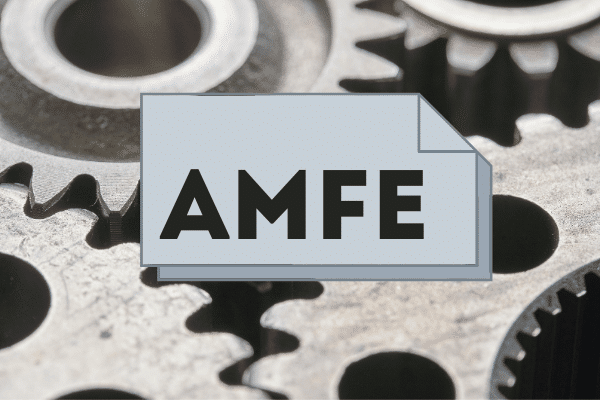Modal analysis of failures and effects is fundamental in the design of industrial products. Thanks to this method it is possible to identify and understand the failures that a product may present, correct them during the design phase and obtain an error-free final result. In this article, we explain what FMEA is and what steps are required to apply modal analysis.
What is FMEA?
Failure Mode and Effects Analysis, known by its acronym FMEA, is a structured analytical methodology used to anticipate and identify failures that may arise in the process of creating a product or system and thus, like forensic engineering, avoid them.
The purpose of a modal analysis is therefore to discover all the ways in which a product could fail during the industrial design process and to avoid these failures or, if necessary, limit their effect.
Different types of modal analysis of failures and effects
Today, modal analysis is an essential part of product and component design in any industry. However, it is necessary to go back to the 1950s to understand its success. Initially, it was developed for use in U.S. weapons development and proved so effective that it was soon incorporated by the most powerful industries of the time, such as the aerospace and automotive industries.
The FMEA method has been evolving, adjusting itself according to what is being analyzed, and has been divided into different subcategories or types of modal analysis of failures and effects. These are as follows:
1. Modal analysis of functional failures and effects
It consists of identifying any specific problem of the process within the context of the whole system. To do this, the evaluation of the parts and components that make up the product is carried out and an analysis of its operation at the system level is performed.
2. Modal analysis of failures and design effects
This type of modal analysis evaluates the possibility of product failure or reduced product life due to problems in the design phase. Thus, everything that has to do with material properties, the interface between components, geometry, tolerance or interaction of systems is analyzed, to name a few.
3. Modal analysis of failures and process effects.
The modal analysis of failures in the processes studies all the steps involved in reaching the final product and that can generate failures that affect the quality of the product and the final performance. This analytical typology focuses, therefore, on processing methods, machinery used, environmental factors that may affect process performance, human factors, measurement systems or maintenance strategies, among others.
7 Steps to perform a modal analysis
The FMEA methodology consists of evaluating how a system or product component fails in order to classify its importance, effect and probability of failure. With this information, which is compiled in a worksheet, design teams can make the necessary modifications and make the best decisions in each part of strategic design and prototyping.
It should be noted that failure mode and effects analysis is based on a stepwise principle of phases, as each step builds on the previous one as the analytical process proceeds. These are the 7 steps used to perform a modal analysis:
- Assemble the modal analysis team and review the process for potential failures.
- Determine the severity rating of each failure.
- Determine the range of occurrence of each failure.
- Determine the detection rating of each failure.
- Assign a risk priority number (RPN) and prioritize actions.
- Take action and review the process.
- Re-rank the risk priority number.
Each element of the process is reviewed to identify potential problem areas and then ranked on a value scale of 1 to 10. In this way, failures that may occur in product development or product launch can be avoided.
Advantages of the FMEA method
Thanks to the modal analysis of failures and effects, we can propose multiple options to mitigate risks, acquire greater capacity to verify changes, improve the design of both the product and the process, and save costs thanks to early solutions.
In short, this methodology is highly effective in identifying and correcting any process and product failures early in the design phase to take effective action and improve product performance. If you are thinking of developing an industrial product and are looking for professional advice, please contact our forensic engineering team.



